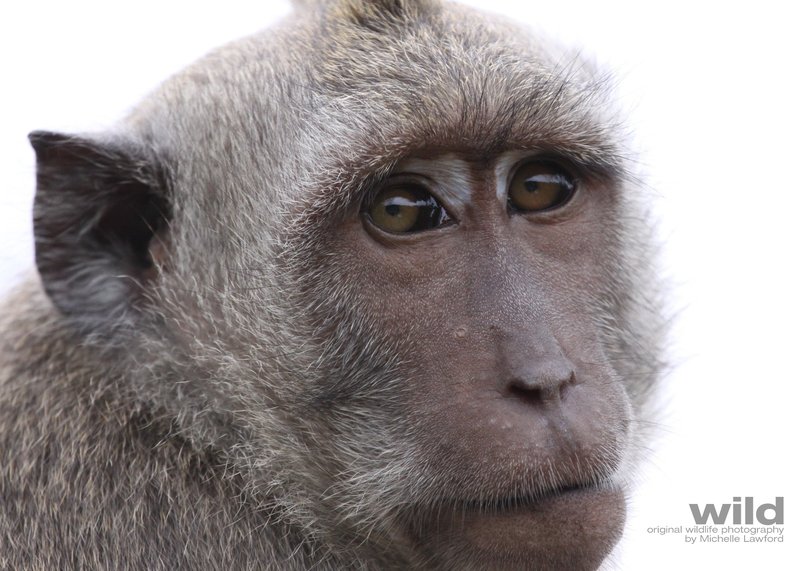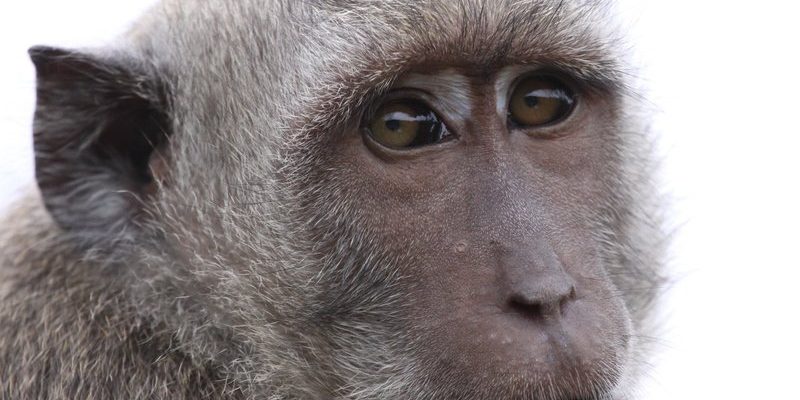
Macaques are truly captivating primates that often find themselves at the center of our attention, whether in documentaries or social media. These clever animals, which belong to the genus Macaca, are known for their adaptability, intelligence, and social structures. Imagine a group of school kids working together during playtime—this is much like how macaques interact with one another. They exhibit complex behaviors, communicate in interesting ways, and have their own hierarchy within their groups.
Found mainly in Asia and North Africa, macaques thrive in various environments, from tropical forests to urban areas. Their diverse habitats reflect their resilience and ability to adapt, which is one reason why they’ve become such a vital part of many ecosystems. It’s fascinating to think about how these creatures navigate their surroundings, just like we do in our ever-changing world.
If you’ve ever seen a video of macaques grooming each other or playing in trees, you might have noticed their playful nature. But don’t be fooled by their cute antics; these animals have unique societal rules and complex emotional lives. So, let’s dive deeper into the world of macaques and discover what makes them so special.
Physical Characteristics
Macaques come in various sizes and colors, making them visually intriguing. Most species have a robust build, with a thick fur coat that can range from brown to grey and even black. The size of macaques varies: the Barbary macaque, for instance, weighs between 50 to 70 pounds, while the Japanese macaque can weigh around 20 to 40 pounds. Imagine seeing a furry little creature swinging gracefully through the trees, showcasing its impressive agility!
One feature that stands out in many macaque species is their facial structure. Most have distinctive faces with expressive eyes, which can tell us a lot about their emotional state. For example, a macaque showing its teeth isn’t giving a smile; it’s often a sign of imminent aggression or stress. It’s a reminder that understanding their body language is essential if we want to appreciate their behaviors fully.
The adaptation of macaques to their environments also influences their physical characteristics. For instance, some species have long tails that aid in balance while navigating the trees, while others are more terrestrial and have shorter tails. Their physical prowess, coupled with their social structures, enables them to face various challenges in their habitats.
Habitat and Distribution
Macaques thrive in a range of habitats, from lush forests to rocky regions. These flexible primates are predominantly found across Asia, with some species residing in North Africa. The Japanese macaque, often called the snow monkey, is famous for its ability to adapt to cold climates, even bathing in hot springs during winter. It’s as if they’ve mastered the art of relaxation amid the snow!
Many macaque species, like the rhesus macaque, have also adapted to urban areas, often seen rummaging through garbage or interacting with humans. This adaptability can lead to fascinating encounters; however, it can also raise concerns about their well-being. As urban areas expand, the delicate balance between wildlife and human expansion becomes increasingly tenuous.
Protecting their habitats is crucial for the survival of macaques. Deforestation and urbanization threaten many species, pushing them into smaller areas. Conservation efforts are vital in ensuring that these extraordinary creatures continue to thrive in their natural environments. After all, they are not just part of our planet’s biodiversity; they also play a significant role in the ecosystems they inhabit.
Diet and Feeding Behavior
Macaques are omnivorous, which means their diet consists of a variety of foods, including fruits, leaves, seeds, and even small insects. This diverse diet allows them to thrive in different environments. Imagine a macaque swinging through the trees, snatching a juicy fruit—it’s a perfect example of their resourcefulness! In addition to fruits and plants, they will also scavenge for food scraps left by humans, showcasing their cleverness when it comes to survival.
One interesting aspect of macaque feeding behavior is their foraging techniques. They often work together to gather food, using their intelligence to solve problems along the way. For example, some macaques have been observed using tools, like sticks or stones, to access hard-to-reach food sources. This ability to innovate demonstrates their cognitive skills and adaptability.
Macaques also engage in social feeding, where they take turns sharing food with other group members. This behavior strengthens their social bonds and helps maintain harmony within the group. How lovely is it to think about these primates working together to ensure that everyone gets a share of the bounty?
Social Structure and Behavior
The social lives of macaques are complex and intriguing, often resembling human interactions. They live in troops, which can range from just a handful to several dozen individuals, led by an alpha male. The hierarchy within these groups influences access to food and mating opportunities. You might think of it as a game of chess, where every move can impact the larger community.
Macaques communicate using a variety of sounds, facial expressions, and body language. These vocalizations can range from warning calls to friendly greeting sounds. Additionally, grooming plays a significant role in their social structure. It’s not just about cleanliness; grooming strengthens social bonds and promotes group cohesion. Imagine the comfort of having a close friend help you unwind after a long day!
Despite their apparent social harmony, macaques can exhibit aggressive behavior, especially when it comes to defending their territory or resources. Conflicts can arise, but they often resolve through displays of submission or reconciliation behaviors. This layer of complexity in their interactions makes them endlessly fascinating, inviting us to reflect on our own social dynamics.
Reproduction and Lifespan
Macaque mating systems vary widely between species, with some being monogamous and others exhibiting polygamous behavior. Female macaques usually give birth to one offspring after a gestation period of about six months. The little ones are adorable and rely heavily on their mothers for care and protection during their early days. Picture a tiny macaque clinging to its mother as they explore their surroundings together—it’s heartwarming!
The lifespan of macaques varies depending on the species and their environment. On average, they can live anywhere from 15 to 30 years in the wild. Those that live in protected environments, like zoos or sanctuaries, can live even longer due to better healthcare and diet. It’s reassuring to know that with the right support, their lives can be extended, giving us a chance to learn even more from these remarkable creatures.
In their early years, offspring learn vital survival skills by observing their mothers and other troop members. This learning process emphasizes the importance of social structures in their development. As they grow, they begin to form friendships within the troop, showcasing their social intelligence. Isn’t it fascinating how much a young macaque can learn simply by being part of a community?
Conservation Status
Many macaque species face various threats to their survival, such as habitat loss, hunting, and the illegal pet trade. Some species, like the gray macaque, have seen their numbers decline sharply due to deforestation and urban encroachment. Conservation efforts are needed now more than ever to protect these remarkable animals and their habitats.
Organizations around the world are working to raise awareness and implement conservation strategies to safeguard macaques. Some efforts focus on habitat restoration, while others aim to tackle the illegal wildlife trade. It’s essential for all of us to contribute to these initiatives, as every little bit helps in preserving our planet’s biodiversity.
You might be wondering how you can help. Supporting wildlife charities, advocating for animal welfare, and spreading awareness about the importance of conservation can go a long way. Together, we can create a future where macaques—and many other species—can thrive alongside humans.
Interesting Facts About Macaques
| Species | Habitat | Diet | Lifespan |
| Rhesus Macaque | Tropical forests, urban areas | Omnivorous | 15-20 years |
| Japanese Macaque | Mountainous regions | Fruits, nuts, seeds | 20-30 years |
| Barbary Macaque | North African forests | Herbivorous | 25-30 years |
FAQ
What are the main types of macaques?
There are several species of macaques, each with its own unique characteristics. Some of the most well-known include the rhesus macaque, Japanese macaque, Barbary macaque, and the long-tailed macaque. Each species adapts to its specific habitat, displaying various behaviors and traits that suit their environment.
Do macaques live in groups?
Yes, macaques are social animals that typically live in groups called troops. These troops can range from a few individuals to several dozen, often led by an alpha male. The structure and dynamics within these groups are complex, with established hierarchies that can change over time.
How intelligent are macaques?
Macaques are considered highly intelligent primates, capable of solving problems and using tools. They exhibit sophisticated social behaviors, communicate with each other using a variety of sounds and expressions, and can learn from their experiences and the experiences of others in their troop.
What do macaques eat?
Macaques are omnivores, meaning they eat both plant and animal matter. Their diet typically includes fruits, leaves, seeds, and small insects. In some cases, they may also scavenge for food in urban areas, making use of human food sources when available.
Are macaques endangered?
Some macaque species are facing threats due to habitat loss, hunting, and the illegal pet trade. Conservation efforts are crucial to protecting these animals and their habitats, and awareness about their plight can help promote necessary changes.
How do macaques communicate?
Macaques communicate through a combination of vocalizations, facial expressions, and body language. They use different sounds to convey messages, such as warning calls or greetings, while also relying on visual cues like grooming and body posture to reinforce social bonds.
Can macaques be pets?
While macaques may appear cute and entertaining, they are wild animals that require specific care and social structures to thrive. Keeping them as pets is generally not advisable, as it can lead to behavioral issues and is often illegal in many regions due to their complex needs and potential for aggression.
Where can I see macaques in the wild?
Macaques are primarily found in Asia and North Africa, inhabiting forests, mountainous areas, and even urban settings. If you’re interested in observing them in the wild, look for wildlife parks, reserves, or natural habitats in countries where they are native, such as India, Japan, and Morocco.
Do macaques have natural predators?
Yes, macaques face threats from various predators, including birds of prey, snakes, and larger carnivores. Young macaques are particularly vulnerable and rely on their troop for protection. The social structure of the troop plays a vital role in guarding against potential threats.
What role do macaques play in their ecosystem?
Macaques are important for their ecosystems as seed dispersers, contributing to forest regeneration. By eating fruits and dispersing the seeds through their droppings, they help maintain the health and diversity of their habitats. Their presence is a sign of a healthy ecosystem, highlighting their ecological significance.
How can I help macaques?
You can support macaques and their conservation by donating to wildlife organizations, advocating for animal welfare, and spreading awareness about the challenges they face. Additionally, practicing responsible tourism and avoiding activities that exploit wildlife can contribute to their protection.

